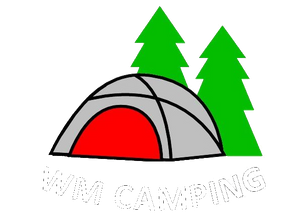Camping Light Buying Guide
When the sun sets on your camping adventure, reliable lighting becomes essential. From cooking in the evening to relaxing in your tent or avoiding midges during summer camping, the right camping light can make all the difference. WM Camping’s detailed guide covers everything you need to know about camping lights, from the types available to key features and product recommendations.
Types of Camping Lights
Camping lights come in a variety of styles, each with its unique benefits and best-use scenarios. Below, we explore the most popular types of camping lights, including a detailed comparison to help you choose the perfect option.
1. LED Lanterns

LED lanterns are an excellent choice for illuminating larger areas. These lights are designed to cast a 360-degree glow, making them perfect for communal spaces like family tents or picnic areas.
| Features | Best For | Advantages | Considerations |
| Adjustable brightness settings, rechargeable options, durable water-resistant designs. | Illuminating large areas such as family tents and cooking spaces. | Long battery life, bright 360-degree light output, safer than gas lanterns. | Bulkier than compact lighting options, requires secure storage in transit. |
2. Head Torches

For hands-free lighting, head torches are indispensable. Whether you're trekking through a forest, setting up camp in the dark, or reading in your sleeping bag, a head torch keeps your hands free and your tasks manageable.
| Features | Best For | Advantages | Considerations |
|---|---|---|---|
| Adjustable straps, lightweight designs, multiple light modes (e.g., strobe or red light). | Hands-free tasks like hiking, cooking, and setting up camp in the dark. | Compact, directional lighting that doesn’t disturb others. | Limited beam width compared to lanterns, shorter battery life on high settings. |
3. String or Strip Lights

For a blend of practicality and ambiance, lanterns with integrated strip lights are a popular choice. These lights can be hung inside tents or strung along awnings, providing a soft glow for relaxation or decorative purposes.
| Features | Best For | Advantages | Considerations |
|---|---|---|---|
| Flexible mounting options (hooks or magnets), USB charging, lightweight designs. | Creating a cosy atmosphere, tent interiors, and decorative use. | Lightweight, portable, and versatile placement. | Often less bright than traditional lanterns, less durable in harsh weather. |
4. Midge Lights

Midge lights are designed specifically to keep pesky insects at bay while providing illumination. These lights often feature a UV component that attracts and zaps midges and other flying insects, keeping your campsite comfortable.
| Features | Best For | Advantages | Considerations |
|---|---|---|---|
| UV light to attract insects, integrated insect trap or zapper, compact and rechargeable options. | Summer camping trips, outdoor dining areas, and relaxing in the evenings. | Reduces midges and flying pests, doubles as a light source, compact designs. | May require frequent cleaning if used in heavily infested areas, limited lighting output compared to lanterns. |
Key Features to Consider When Buying Camping Lights
Camping lights should suit your activities and camping style. Here are the key features to focus on:
Brightness (Lumens)
- 100–200 lumens: Ideal for small tents or reading.
- 300–500 lumens: Suitable for medium-sized tents or general campsite use.
- 500+ lumens: Best for illuminating large areas or group activities.
Power Source
| Power Type | Pros | Cons |
|---|---|---|
| Battery-Operated | Easy to replace, widely available. | Requires spare batteries, less eco-friendly. |
| Rechargeable | Convenient, cost-effective, eco-friendly. | Dependent on access to power. |
| Solar-Powered | Sustainable and ideal for sunny trips. | Dependent on sunlight availability. |
| Hybrid Models | Offers flexibility for longer trips. | May be bulkier than single-power models. |
Durability and Weather Resistance
Look for water-resistant or waterproof models for rainy conditions and shockproof casings to withstand drops. Midge lights and lanterns often have rugged designs for outdoor use.
Portability and Weight
Backpackers and hikers should prioritize lightweight, collapsible designs, while car campers can opt for sturdier, larger lights with higher output.
Additional Features
| Feature | Why It’s Important |
|---|---|
| Adjustable Brightness | Helps save power and adapts to various tasks. |
| Red Light Mode | Preserves night vision and minimizes disruption. |
| Hanging Hooks or Straps | Ideal for positioning lights inside tents or from awnings. |
WM Camping’s Top Recommendations
| Product Name | Type | Best For | Key Features |
|---|---|---|---|
| BrightBeam Rechargeable Lantern | LED Lantern | Group camping, large spaces. | 600 lumens, USB-rechargeable, water-resistant. |
| TrailTracker Pro Head Torch | Head Torch | Hands-free tasks, hiking. | Lightweight, red-light mode, long battery life. |
| GlowLine Ambient Strip | Strip Light | Tent interiors, decorative lighting. | USB-charged, flexible mounting. |
| NightShield UV Midge Light | Midge Light | Insect control, outdoor dining. | UV attraction, insect zapper, compact design. |
Tips for Maximising Your Camping Lights
- Carry Extra Power: Whether batteries or a power bank, always pack backups for longer trips.
- Place Lights Strategically: Reflective surfaces like tent walls can amplify brightness.
- Use Dual-Purpose Lights: Midge lights that double as lanterns save space.
- Regular Cleaning: Midge lights work best when the trap or zapper is kept clean.
Why Shop Camping Lights at WM Camping?
At WM Camping, we offer a carefully selected range of camping lights tailored to every camper’s needs. From durable LED lanterns to innovative midge lights, we ensure quality and value.
- Expert advice from camping specialists.
- Competitive prices and seasonal discounts.
- A trusted name in camping gear for decades.













